Influence of Frost Growth and Migration in Cryogenic Heat Exchanger on Air Refrigerator
Abstract
:1. Introduction
2. Frost Formation in Heat Exchanger
2.1. The Air Refrigerator
2.2. The Cryogenic Heat Exchanger
2.3. The Cryogenic Heat Exchanger
2.3.1. Heat Transfer Characteristics
2.3.2. Property Characteristics of Frost Layer
3. Frost Model of the Cryogenic Heat Exchange
3.1. Heat and Mass Transfer During Frosting
- (1)
- Frosting process in the heat exchanger is quasi-steady.
- (2)
- Frosting occurs in the hot side of the heat exchanger, the frost layer is filled with the entire fin spacing, and the frost is evenly distributed in the same control volume.
- (3)
- The density and thermal conductivity of frost layer are characterized by average values.
- (4)
- The heat transfer in the frost layer is one-dimensional heat conduction along the direction of thickness.
3.2. Build of the Frosting Model
4. Result and Discussion
4.1. Experimental Study
4.1.1. Heat Transfer Characteristics
4.1.2. Experimental Verification
4.2. Growth and Migration of Frost Layer
4.3. Influence of Inlet Humidity
4.4. Influence of Running Time
5. Conclusions
Author Contributions
Funding
Conflicts of Interest
Abbreviations
| Symbols | |
| A | Thermal diffusivity of wet air (m2 s−1) |
| af | Cutting length of the heat exchanger (m) |
| A2 | Secondary surface area (m2) |
| As | Total surface area (m2) |
| cp | Specific heat (J K−1 kg−1) |
| CAh | Concentration of water vapor in the main stream of wet air (mol m3) |
| CAs | Concentration of water vapor in moist air at the frost surface (mol m3) |
| da | Moisture content of wet air (g (kg· dry air) −1) |
| D | Mass diffusion coefficient of wet air (m2 s−1) |
| G | Mass velocity (kg m−2 s−1) |
| H | Heat transfer coefficient (W m−2 K−1) |
| hm | Convective mass transfer coefficient (m s−1) |
| m | Mass flow rate (kg s−1) |
| Convective mass transfer rate (kg m2 s−1) | |
| Molar mass of water vapor (kg mol−1) | |
| pa | Partial pressure of water vapor (Pa) |
| ph | Total pressure of wet air (Pa) |
| qa | Heat transfer at the hot side (W m−2) |
| T | Temperature (K) |
| Ta | Temperature of water vapor (K) |
| Ts | Temperature on the frost layer surface (K) |
| γfr | Latent heat of condensation of water vapor (J kg−1) |
| λ | Thermal conductivity (W m−1 K−1) |
| τ | Time (s) |
| ρ | Density (kg m−3) |
| ρw | Density of parting plate (kg m−3) |
References
- Flynn, T. Cryogenic Engineering, 2nd ed.; CRC Press Inc.: Boca Raton, FL, America, 2004; pp. 21–35. [Google Scholar]
- Deserranno, D.; Zagarola, M.; Li, X.; Mustafi, S. Optimization of a Brayton cryocooler for ZBO liquid hydrogen storage in space. Cryogenics 2014, 64, 172–181. [Google Scholar] [CrossRef]
- Hiraia, H.; Suzukia, Y.; Hirokawaa, M.; Kobayashia, H.; Kamiokaa, Y.; Iwakuma, M.; et al. Development of a turbine cryocooler for high temperature superconductor applications. Physica C. 2009, 469, 1857–1861. [Google Scholar] [CrossRef]
- Hou, Y.; Yang, S.; Chen, X.; Chen, S.; Lai, T. Study on the matching performance of a low temperature reverse Brayton air refrigerator. Energy Convers. Manag. 2015, 89, 339–348. [Google Scholar] [CrossRef]
- James, S.; Arsalan, R. Thermodynamic optimization of reverse Brayton cycles of different configurations for cryogenic applications. Int. J. Refrig. 2013, 36, 1529–1544. [Google Scholar]
- Yang, S.; Fu, B.; Hou, Y.; Cheng, S.; Li, Z.; Wang, S. Transient cooling and operational performance of the cryogenic part in reverse Brayton air refrigerator. Energy 2019, 167, 921–938. [Google Scholar] [CrossRef]
- Yang, S.; Cheng, S.; Chen, X.; Zhang, X.; Hou, Y. Study on the coupling performance of a turboexpander compressor applied in cryogenic reverse Brayton air refrigerator. Energy Convers. Manag. 2016, 122, 386–399. [Google Scholar] [CrossRef]
- Yang, S.; Liu, Z.; Fu, B. Simulation and evaluation on the dynamic performance of a cryogenic turbo-based reverse Brayton refrigerator. Appl. Sci. 2019, 9, 531. [Google Scholar] [CrossRef]
- William, M.K.; London, A.L. Compact Heat Exchangers, 3rd ed.; McGraw-Hill Book Company: New York, NY, USA, 1984; pp. 503–510. [Google Scholar]
- Zhan, Y.; Wang, J.; Wang, W.; Wang, R. Dynamic simulation of a single nitrogen expansion cycle for natural gas liquefaction under refrigerant inventory operation. Appl. Therm. Eng. 2018, 128, 747–761. [Google Scholar]
- Joshi, M.H. Heat transfer and friction in the offset strip-fin heat exchanger. Int. J. Heat Mass Tran. 1987, 30, 69–84. [Google Scholar] [CrossRef]
- Chang, H.; Chung, M.J.; Kim, M.J.; Park, S.B. Thermodynamic design of methane liquefaction system based on reversed-Brayton cycle. Cryogenics 2009, 49, 226–234. [Google Scholar] [CrossRef]
- Shin, Y.; Lee, Y.P. Design of a boil-off natural gas reliquefication control system for LNG carriers. Appl. Energy 2009, 86, 37–44. [Google Scholar] [CrossRef]
- Zhao, H.; Hou, Y.; Zhu, Y.; Chen, L.; Chen, S. Experimental study on the performance of an aircraft environmental control system. Appl. Therm. Eng. 2009, 29, 3284–3288. [Google Scholar] [CrossRef]
- Chen, L.; Zhang, X.; Wang, C.; Yang, C. A novel environmental control system facilitating humidification for commercial aircraft. Build. Environ. 2017, 126, 34–41. [Google Scholar] [CrossRef]
- Daniel, B. Integration of exergy analysis into model-based design and evaluation of aircraft environmental control systems. Energy 2017, 137, 739–751. [Google Scholar]
- Hayashi, Y.; Aoki, A.; Adashi, S.; Hori, K. Study of frost properties correlating with frost formation types. ASME J. Heat Transf. 1977, 99, 239–245. [Google Scholar] [CrossRef]
- Cheng, C.H.; Cheng, Y.C. Predictions of frost growth on a cold plate in atmospheric air. Int. Commun. Heat Mass Transf. 2001, 28, 953–962. [Google Scholar] [CrossRef]
- Cheikh, A.; Jacobi, A. A mathematical model for frost growth and densification on flat surfaces. Int. J. Heat Mass Transf. 2014, 77, 604–611. [Google Scholar] [CrossRef]
- Silva, D.L.; Melo, C.; Hermes, C.J.L. Effect of frost morphology on the thermal-hydraulic performance of fan supplied tube-fin evaporators. App. Therm. Eng. 2017, 111, 1060–1068. [Google Scholar] [CrossRef]
- Sommers, A.D.; Napora, A.C.; Truster, N.L.; Caraballo, E.J.; Hermes, C.J.L. A semi-empirical correlation for predicting the frost density on hydrophilic and hydrophobic surfaces. Int. J. Refrig. 2017, 74, 311–321. [Google Scholar] [CrossRef]
- Christian, J.L.H.; Andrew, D.S.; Colton, W.G.; Valter, S.N.J. A semi-empirical model for predicting frost accretion on hydrophilic and hydrophobic surfaces. Int. J. Refrig. 2018, 87, 164–171. [Google Scholar]
- Lax, P.D. Hyperbolic difference equations: A review of the Courant-Friedrichs-Lewy paper in the light of recent developments. IBM J. 1967, March, 235–238. [Google Scholar] [CrossRef]
- Trivellato, F.; Castelli, M.R. On the Courant–Friedrichs–Lewy criterion of rotating grids in 2D vertical-axis wind turbine analysis. Renew. Energy 2014, 62, 53–62. [Google Scholar] [CrossRef]
- Tao, Y.X.; Besant, R.W.; Rezkallah, K.S. A mathematical model for predicting the densification and growth of frost on a flat plate. Int. J. Heat Mass Transf. 1993, 36, 353–363. [Google Scholar] [CrossRef]
- Lee, Y.B.; Ro, S.T. An experimental study of frost formation on a horizontal cylinder cross flow. Int. J. Refrig. 2001, 24, 468–474. [Google Scholar] [CrossRef]
- Cheng, C.H.; Shui, C.C. Frost formation and frost crystal growth on a cold plate in atmospheric air flow. Int. J. Heat Mass Transf. 2002, 45, 4289–4303. [Google Scholar] [CrossRef]
- Fukuta, N. Experimental studies on the growth of small ice crystals. J. Atmos. Sci. 1969, 26, 522–531. [Google Scholar] [CrossRef]
- Sanders, C.T. The influence of frost formation and defrosting on the performance of air coolers. Ph.D. Thesis, Delft University, Delft, The Netherlands, 1974. [Google Scholar]
- Fossa, M.; Tanda, G. Study of free convection frost formation on a vertical plate. Exp. Therm. Fluid Sci. 2002, 26, 661–668. [Google Scholar] [CrossRef]
- Padki, M.; Sherif, S.; Nelson, R. A simple method for modeling the frost formation phenomenon in different geometries. Ashrae Trans. 1989, 95, 1127–1137. [Google Scholar]
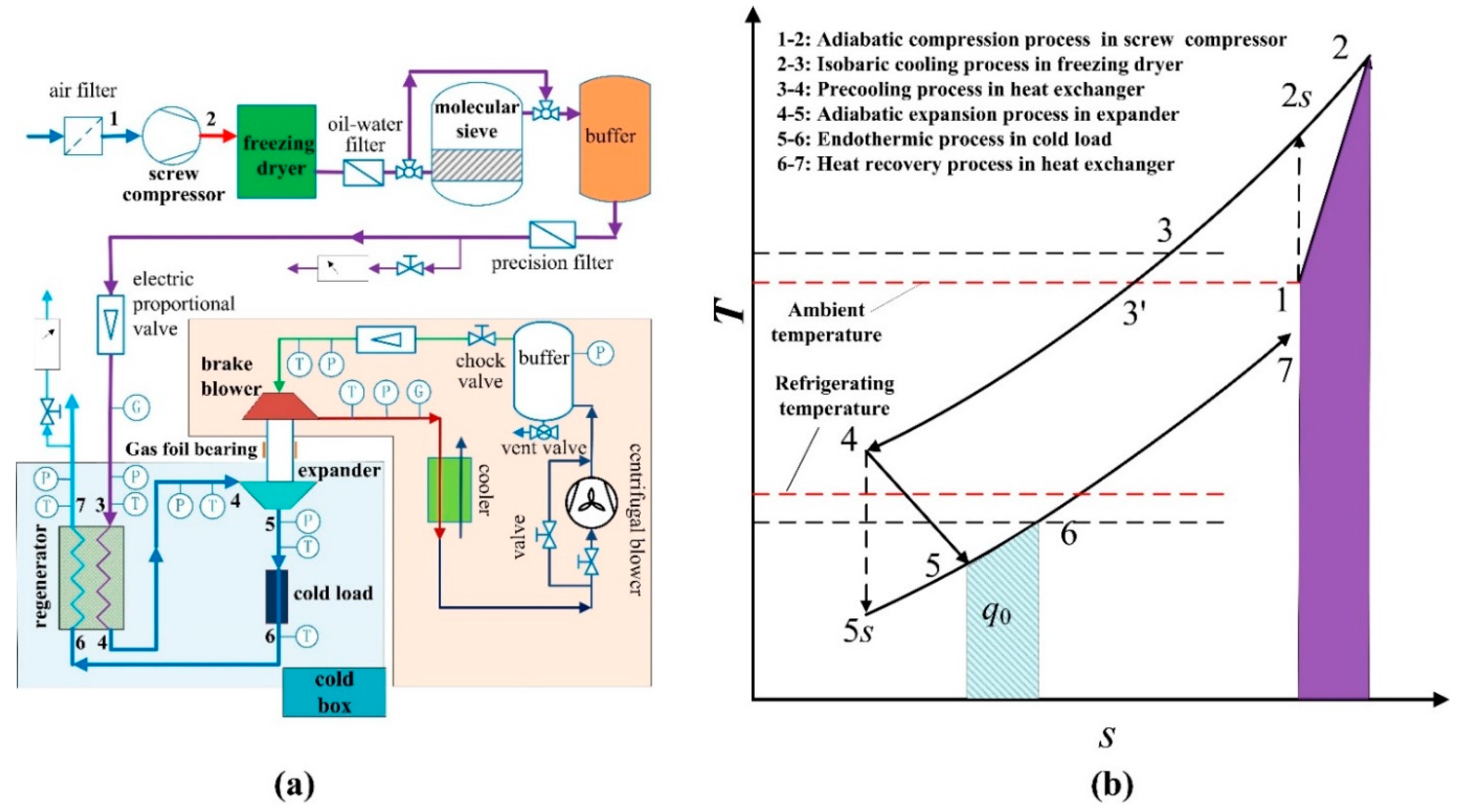

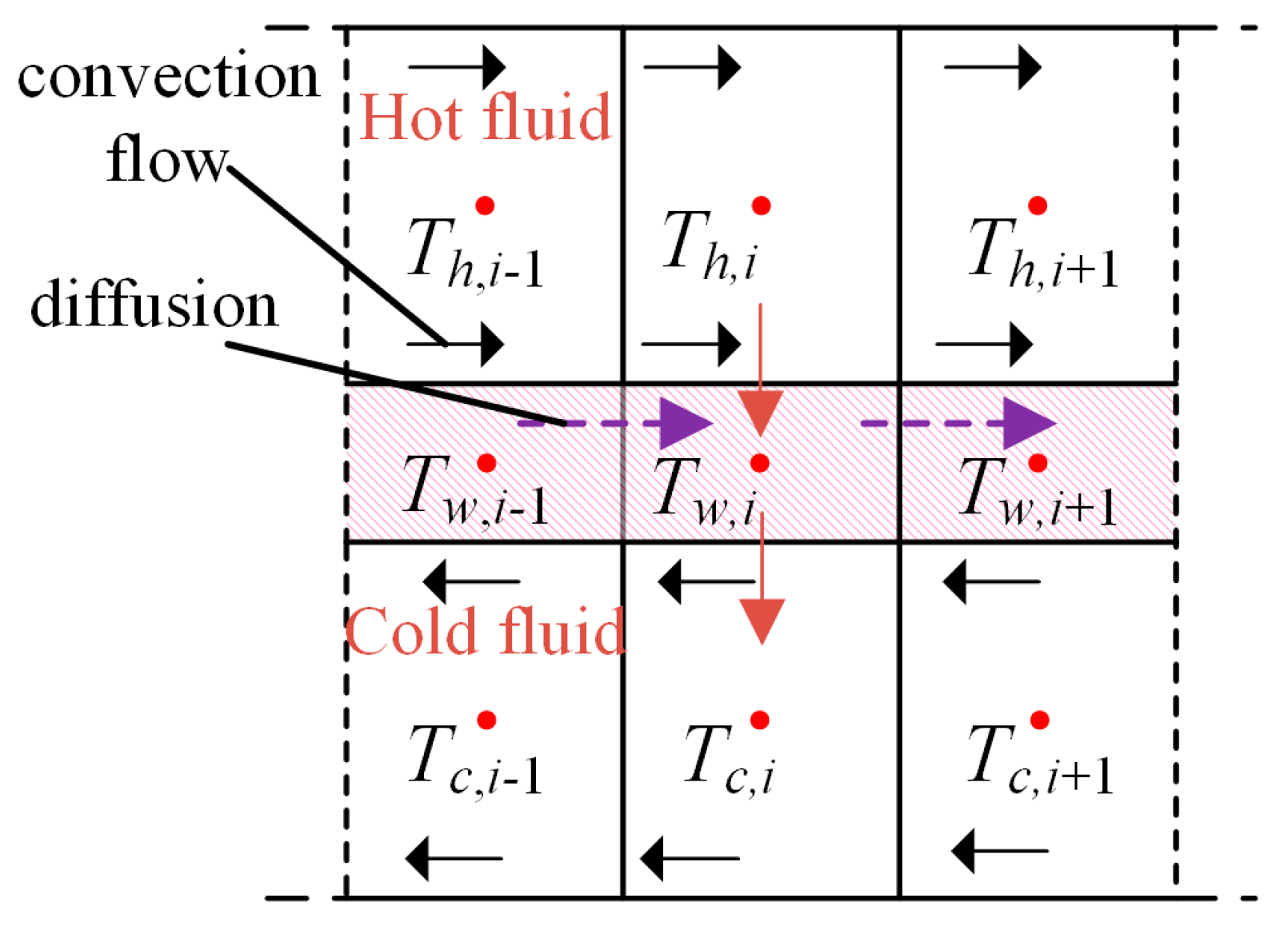

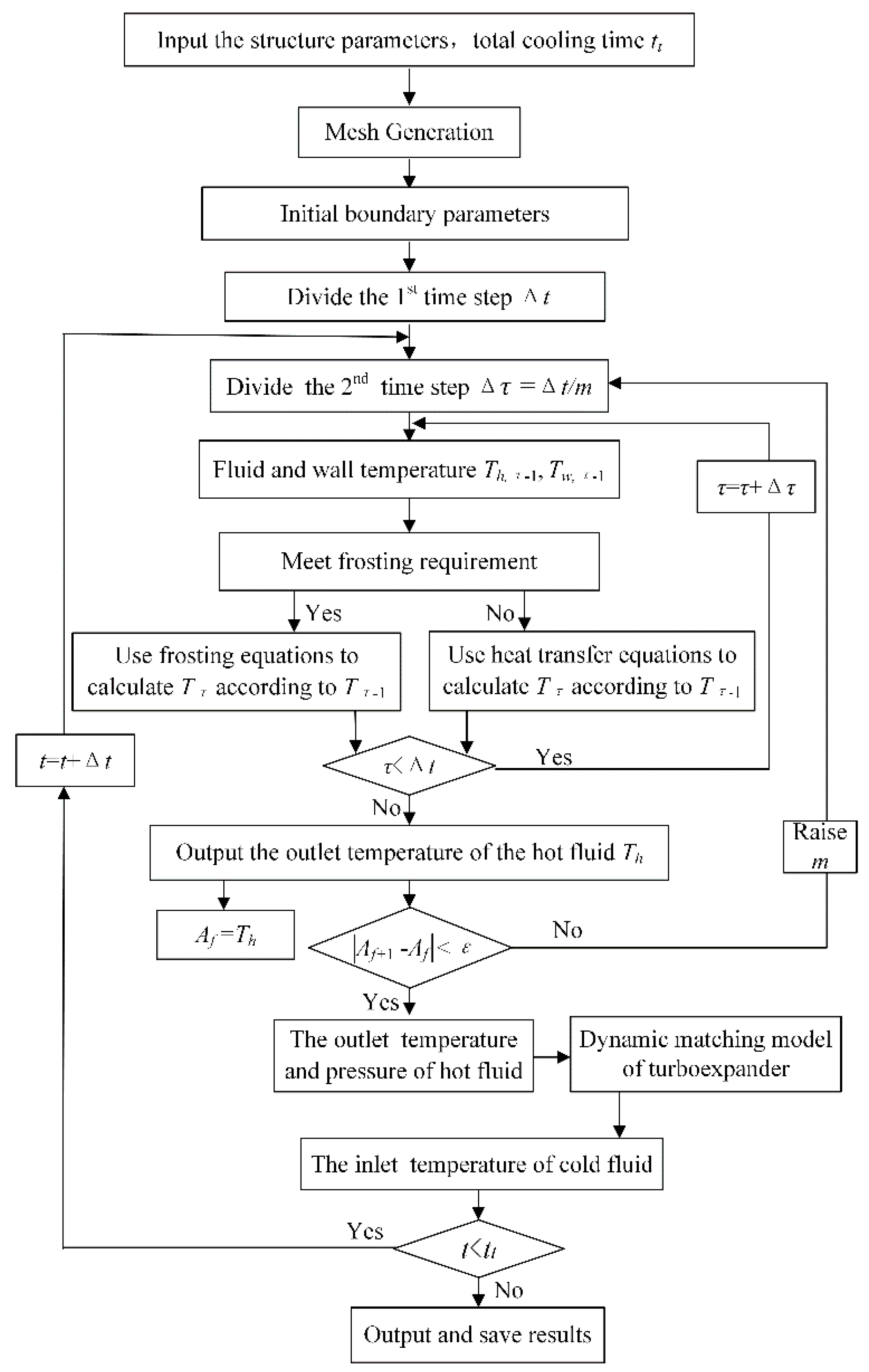
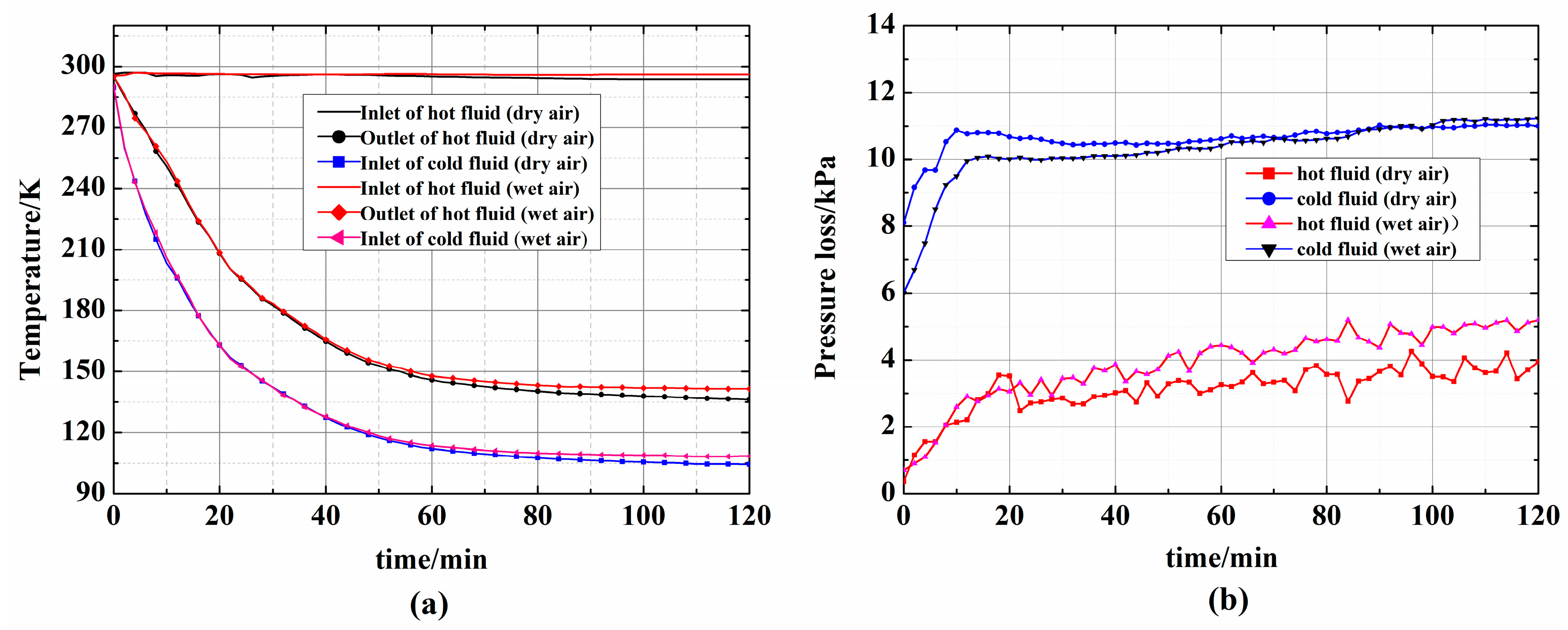
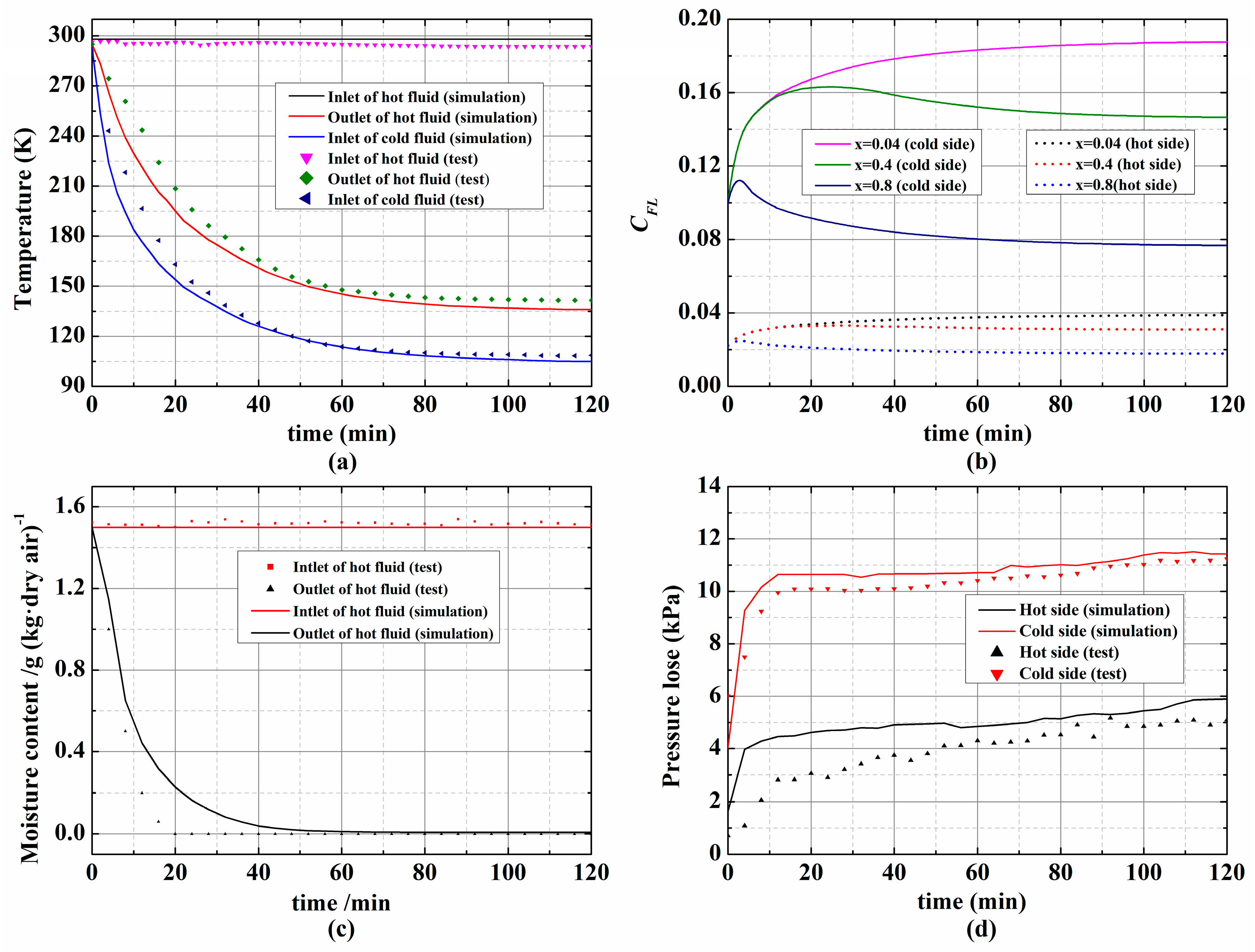
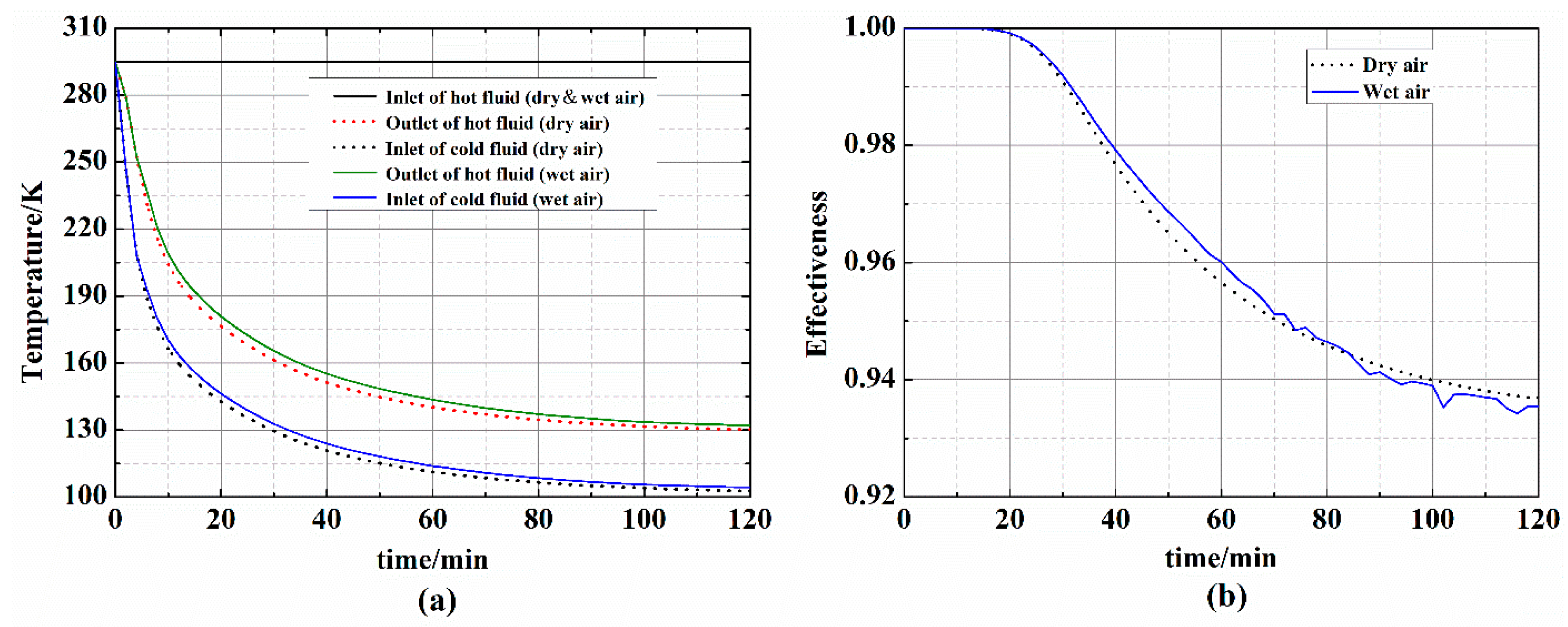

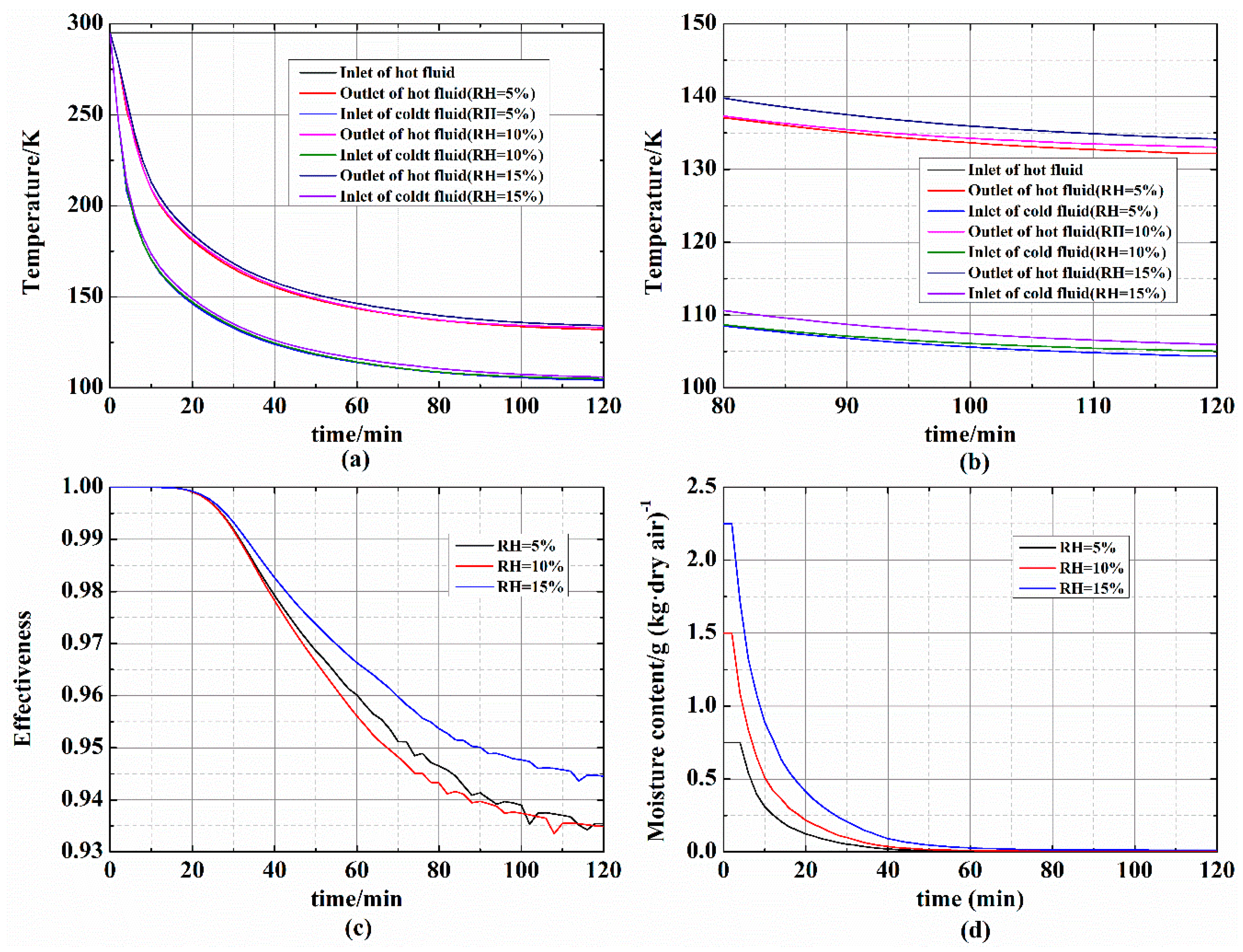

| Parameters | Hf | sf | δf | xf | yf | δW | af |
|---|---|---|---|---|---|---|---|
| Value/mm | 9.5 | 1.2 | 0.2 | 1.0 | 9.3 | 1.2 | 10 |
| Parameters | Inlet Pressure/MPa (abs.) | Outlet Pressure/MPa (abs.) | Inlet Temperature/K | Inlet Moisture Content/g (kg· dry air)−1 |
|---|---|---|---|---|
| Test 1 | 0.507–0.510 | 0.100 | 294.0–295.4 | 1.511–1.550 |
| Test 2 | 0.508–0.510 | 0.100–0.101 | 294.1–295.0 | <0.0075 |
© 2019 by the authors. Licensee MDPI, Basel, Switzerland. This article is an open access article distributed under the terms and conditions of the Creative Commons Attribution (CC BY) license (http://creativecommons.org/licenses/by/4.0/).
Share and Cite
Yang, S.; Liu, Z.; Fu, B.; Chen, Y. Influence of Frost Growth and Migration in Cryogenic Heat Exchanger on Air Refrigerator. Appl. Sci. 2019, 9, 753. https://doi.org/10.3390/app9040753
Yang S, Liu Z, Fu B, Chen Y. Influence of Frost Growth and Migration in Cryogenic Heat Exchanger on Air Refrigerator. Applied Sciences. 2019; 9(4):753. https://doi.org/10.3390/app9040753
Chicago/Turabian StyleYang, Shanju, Zhan Liu, Bao Fu, and Yu Chen. 2019. "Influence of Frost Growth and Migration in Cryogenic Heat Exchanger on Air Refrigerator" Applied Sciences 9, no. 4: 753. https://doi.org/10.3390/app9040753
APA StyleYang, S., Liu, Z., Fu, B., & Chen, Y. (2019). Influence of Frost Growth and Migration in Cryogenic Heat Exchanger on Air Refrigerator. Applied Sciences, 9(4), 753. https://doi.org/10.3390/app9040753





